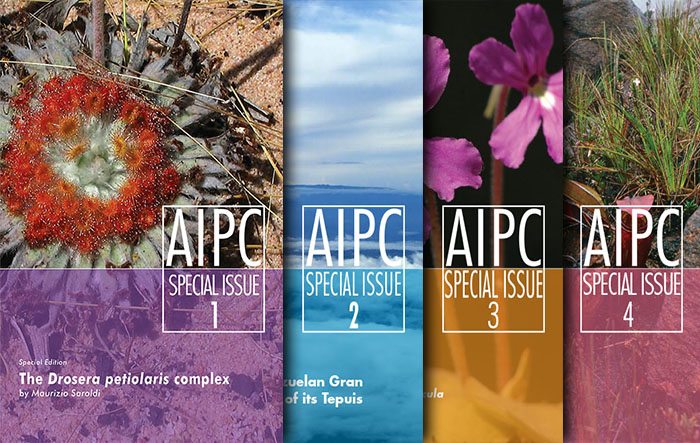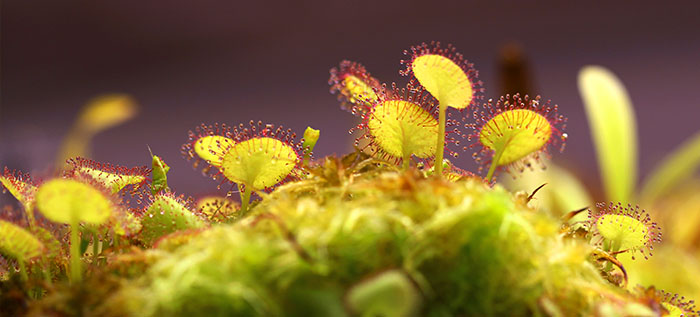We’re excited to have permission to share the AIPC Special Issue magazines by the Associazione Italiana Piante Carnivore; a carnivorous plant society based in Italy. After receiving several requests, their editorial group translated these issues for English-speaking audiences. The magazines feature a wealth of information along with beautiful photos of carnivorous plants from all around the world. Enjoy!
AIPC Special Issue 1: The Petiolaris Complex
(published by the AIPC in 2007)
This issue provides a comprehensive list and descriptions of the various species of the Drosera Petiolaris Complex. It also discusses habitat and growth cycles along with a map that highlights some of the locations the plants grow in the wild. Cultivation requirements are also covered along with methods used by several experienced growers.
AIPC Special Issue 2: The Venezuelan Gran Sabana and Tepuis
(published by the AIPC in April 2010)
Issue 2 takes us to the Gran Sabana and Tepuis of Venezuela with Andy Smith, an experienced carnivorous plant grower and Heliamphora enthusiast. Not only does he paint a detailed picture of the alien-like landscape and many carnivorous plants found there, but he also discusses the many obstacles faced (some rather comical) when exploring such inaccessible terrain. We truly hope he has found a reliable camping stove!
AIPC Special Issue 3: Mexican Pinguicula
(published by the AIPC in 2009)
Issue 3 gives an overview of the history and habitat of Mexican Pinguicula, as well as their distribution and morphology. It covers the various types of leaf and floral structures and provides a breakdown for each species that can aid in identification. Cultivation guidelines are also discussed including watering, substrate, and lighting needs.
AIPC Special Issue 4: News of 2011
(published by the AIPC in 2012)
This issue provides updates for 46 carnivorous plants from multiple genera including Darlingtonia, Drosera, Genlisea, Heliamphora, Nepenthes, Sarracenia, and Utricularia along with an article proving the carnivory of the genus Philcoxia. The updates (as of 2011) include newly discovered species, subspecies, varieties and forms as well as corrections and amendments to previously published descriptions.









Leave A Comment